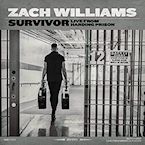gowtham
Posts: 3
Joined: 2/23/2010
Status: offline

|
Americans may be startled to pick up a 256-page book about the Pacific War and discover that Pearl Harbor isn't mentioned until page 135. That's a consequence of Ienaga's belief that the war actually began with the Japanese army's 1931 coup in Manchuria, which led inevitably to war with China, which in turn led to the wider war agaisnt the western Allies. Despite Japan's claims about liberating Asians from colonialism, its purpose in going to war was to obtain the raw materials with which to defeat China. That was one reason the Japanese treated the "liberated" peoples so badly--as badly as they treated their white PWs. Part of the blame goes to the Japanese military tradition, in which the officers were an elite and the troops were conscripted from the younger sons of tenant farmers. Brutality was the norm, and the enlisted men who stayed in the army and became sergeants were precisely those who would most brutalize the next batch of recruits. Draftees were called issen gorin--roughly, "penny postcards," because that was the cost and the method of obtaining one. Why husband the life of a soldier when he could be replaced for a penny? Ienaga explains that the enlisted soldiers were the bottom of the food chain, that they had no on upon whom to vent their brutality in return. During WWII, it was fashionable in the U.S. to show General Tojo as the Japanese dictator, making a trio with Germany's Hitler and Italy's Mussolini. But of course that was very far from true, as even American propaganda recognized, since sometimes the emperor Hirohito filled the same role. Ienaga is especially good at explaining this mystery, in which a dictator was imposed by a group of elder statesmen--then deposed when his usefulness was over. Tojo ruled the government and the army, but he never managed to rule the navy--he didn't even learn about the defeat at Midway until a month after four aircraft carriers and a major portion of the navy's fighter planes had gone to the bottom. This is a valuable book, one of only a half-dozen serious studies by Japanese scholars of World War II available in English. We didn't know our enemy in 1941; we hardly know him any better today.
___________________________________________________________
semi accident attorney michigan
personal injury lawyers
|
 Printable Version
Printable Version
















 New Messages
New Messages No New Messages
No New Messages Hot Topic w/ New Messages
Hot Topic w/ New Messages Hot Topic w/o New Messages
Hot Topic w/o New Messages Locked w/ New Messages
Locked w/ New Messages Locked w/o New Messages
Locked w/o New Messages Post New Thread
Post New Thread